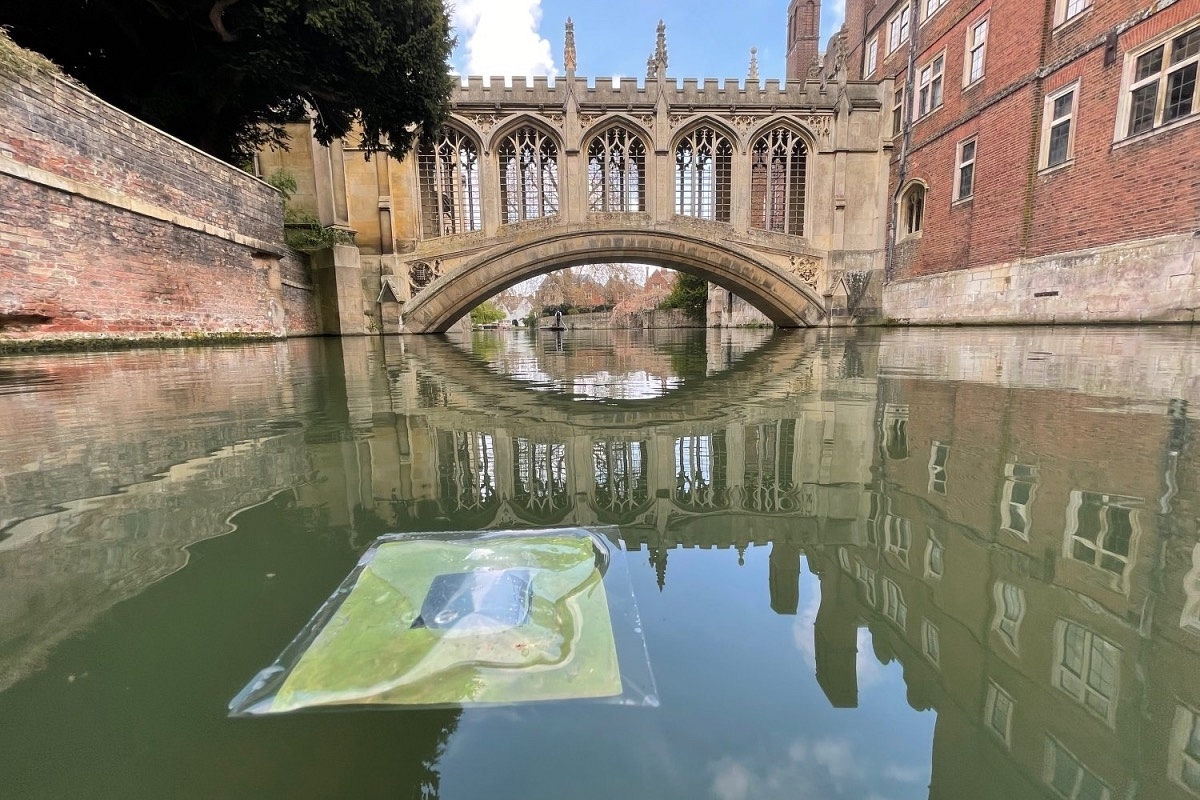Science
Researchers Develop Floating 'Artificial Leaf' To Turn Carbon Dioxide Into Fuel

Floating artificial leaf
A team of researchers at Cambridge University has develop an artificial leaf that can float on water and absorb sunlight and carbon dioxide from air and turn the water into fuel like hydrogen and syngas.
The researchers tested their 100-square-centimetre artificial-leaf device outdoors on a river.
The device, depending on the catalyst used, either splits water to produce hydrogen fuel, or converts carbon dioxide into syngas, a mix of carbon monoxide and hydrogen that is used to make other fuels like methanol.
Cambridge University's chemistry research fellow Virgil Andrei, who led the research work that has been published in journal Nature, said that the device not only works like a natural leaf but it also has We have a device that not only works like a natural leaf, it also has the flexible, lightweight properties of a leaf.
The first artificial leaf that could make syngas was first reported in 2019 by Andrei, chemistry professor Erwin Reisner and their colleagues.
The team used perovskite light absorbers and either platinum or cobalt as catalysts for the reaction.
While the platinum catalyst splits water into oxygen and hydrogen in the presence of sunlight, cobalt triggers the reduction of carbon dioxide and water into syngas.
However, their devices were small-scale prototypes tested only in laboratory settings.
With an aim to upscale and commercialise the technology, the team mulled redesign the device structure.
“One idea would be to shrink the device," Andrei was quoted as saying.
They replaced the thick glass substrates the team had used before with thin conductive plastic substrates and coated them with layers, each a few micrometers thick, of perovskites, conductive metal-oxide and polymer, and cobalt or platinum catalyst.
Further, the team used a mixture of standard epoxy glue and graphite powder to coat the layers to protect them from moisture.
The lightweight device floated in water, and under sunlight it quickly produced syngas bubbles, which further helped keep the device afloat, reports Spectrum.
The artificial leaf reportedly worked well for a 24-hour test period and produced hydrogen and carbon monoxide with efficiencies of about 0.6 percent and 0.05 percent, respectively, for each gram.
According to Andrei, the efficiency is low but comparable to natural photosynthesis, which has a typical efficiency of 0.5 to 1 percent.
However, the benefit of the device is that it could be made much cheaply in comparison to other solar fuel technologies that rely on separate photovoltaic cells and electrochemical cells to conduct the reactions and take up space on land.
Support Swarajya's 50 Ground Reports Project & Sponsor A Story
Every general election Swarajya does a 50 ground reports project.
Aimed only at serious readers and those who appreciate the nuances of political undercurrents, the project provides a sense of India's electoral landscape. As you know, these reports are produced after considerable investment of travel, time and effort on the ground.
This time too we've kicked off the project in style and have covered over 30 constituencies already. If you're someone who appreciates such work and have enjoyed our coverage please consider sponsoring a ground report for just Rs 2999 to Rs 19,999 - it goes a long way in helping us produce more quality reportage.
You can also back this project by becoming a subscriber for as little as Rs 999 - so do click on this links and choose a plan that suits you and back us.
Click below to contribute.
Latest